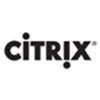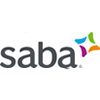
Introduction
Banks must maintain robust security and compliance in today’s highly regulated and fast-paced financial environment. Segregation of Duties (SoD) is a critical internal control mechanism that prevents fraud, errors, and unauthorized activities. Implementing effective SoD practices can be challenging due to the complexity of banking operations. However, automation offers a solution to streamline these processes, ensuring greater accuracy and efficiency. In this blog, we will explore what SoD is, its various types and relevance in banking, and how automation and continuous monitoring, through platforms like BAAR-IGA, can support effective SoD implementation.
What is Segregation of Duties (SoD)?
Segregation of Duties (SoD) is a fundamental internal control that prevents fraud, errors, and unauthorized actions by dividing responsibilities among multiple individuals. The core concept of SoD is that no single individual should control two or more conflicting responsibilities. This division creates a system of checks and balances, ensuring that separate individuals handle different aspects of a critical transaction, thus minimizing the risk of misconduct.
In the banking industry, SoD is crucial because it helps safeguard assets, ensures the accuracy of financial reporting, and complies with regulatory requirements. By separating duties such as transaction initiation, authorization, and record-keeping, banks can enhance their internal controls and reduce the likelihood of fraudulent activities.
Different Types of SoD and Their Relevance in Banking
Segregation of Duties can be categorized into various types, each addressing different aspects of banking operations. Below are some key types of SoD and their relevance in the banking sector:
- Transaction Authorization
Transaction authorization involves separating the roles of those who initiate transactions from those who approve them. This type of SoD is fundamental in banking to ensure that all transactions are independently reviewed and authorized, reducing the risk of unauthorized or fraudulent activities. For example, an employee who processes a loan application should differ from the person who approves the loan.
- Asset Custody
Asset custody refers to the physical or digital management of a bank’s assets, such as cash, securities, and sensitive information. To prevent fraud and misappropriation, asset custody should be separated from the record-keeping and reconciliation functions. For instance, the employee responsible for managing cash should differ from those who record cash transactions in the accounting system.
- Record-Keeping
Accurate record-keeping is essential for financial reporting and regulatory compliance. In the context of SoD, record-keeping duties should be separated from operational and custodial responsibilities. This means that the individual maintaining transaction records should not be involved in processing or approving transactions. This separation ensures that records are accurate and independently verified.
- Reconciliation
Reconciliation involves comparing internal records with external statements, such as bank statements, to ensure accuracy and completeness. Individuals performing reconciliation duties should not be involved in the original transaction processing or record-keeping to maintain objectivity and prevent potential conflicts of interest. This independent verification process helps identify discrepancies and potential fraud.
- Access Control
Access control is a critical aspect of SoD in banking, ensuring that employees have appropriate access rights based on their roles and responsibilities. Access control involves separating the duties of those who grant access (e.g., system administrators) from those who use the access to perform transactions. Implementing stringent access controls helps prevent unauthorized access and protects sensitive financial data.
How Automation Supports Effective SoD
Automation plays a vital role in supporting the Segregation of Duties by streamlining processes, reducing the risk of human error, and ensuring consistent application of controls. Here’s how automation enhances SoD:
Enhanced Accuracy and Efficiency
Automation reduces the likelihood of errors that can occur with manual processes. By automating transaction authorization, record-keeping, and reconciliation tasks, banks can ensure greater accuracy in maintaining SoD. Automated systems can process transactions and generate reports faster than manual methods, improving overall efficiency.
Real-Time Monitoring and Alerts
Automated systems provide real-time monitoring of user activities and access controls, ensuring that any deviations from established SoD policies are immediately detected. Instant alerts can be generated for suspicious activities or potential breaches, allowing for swift intervention and reducing the risk of fraud.
Consistent Policy Enforcement
Automation ensures that SoD policies are consistently applied across the organization. Automated workflows can enforce access controls, transaction authorization, and other SoD measures uniformly, reducing the risk of non-compliance and ensuring adherence to regulatory requirements.
Comprehensive Reporting and Analytics
Automated systems can generate detailed reports and analytics on user activities, access controls, and compliance status. These insights help banks identify potential SoD violations, assess the effectiveness of their controls, and make data-driven decisions to enhance their SoD practices.
How BAAR-IGA Automates SoD for Banks
BAAR-IGA, an advanced Identity Governance and Administration platform, provides a comprehensive solution for automating SoD in banks. Here’s how BAAR-IGA automates SoD:
- Integration Capabilities: BAAR-IGA seamlessly integrates with various banking systems, including legacy infrastructure, modern applications, and IoT devices. Comprehensive integration ensures monitoring and control across the organization.
- Low-Code Platform: The low-code platform allows banks to customize and deploy SoD controls rapidly. With a visual editor and drag-and-drop functionality, non-technical staff can efficiently configure workflows and access controls, adapting SoD processes to meet changing regulatory requirements.
- Built-In RPA (Robotic Process Automation): BAAR-IGA incorporates RPA to automate repetitive tasks such as access reviews, policy enforcement, and user provisioning. This reduces administrative burdens, minimizes human error, and ensures consistent application of SoD policies.
- Native Data Engineering: BAAR-IGA handles large volumes of data from various sources, providing real-time aggregation, analysis, and action. This enhances the accuracy and timeliness of SoD monitoring and reporting.
- Comprehensive Reporting and Analytics: BAAR-IGA’s advanced reporting and analytics tools provide deep insights into user activities, access controls, and compliance status. These tools help banks identify potential SoD violations and assess the effectiveness of their controls.
- Workflow Automation: BAAR-IGA’s workflow automation capabilities streamline the implementation and management of SoD controls. Customizable workflows ensure that all steps in the SoD process are executed efficiently and in compliance with established policies.
Conclusion
Segregation of Duties is a critical component of internal controls in the banking sector, essential for preventing fraud, ensuring accuracy, and maintaining regulatory compliance. Automation offers significant benefits in supporting effective SoD, from enhanced accuracy and efficiency to improved security and compliance. BAAR-IGA provides a robust and flexible solution for automating SoD, enabling banks to achieve their security and compliance objectives with greater ease.
As the banking sector continues to evolve, adopting automated SoD solutions will be crucial for staying ahead of security threats and regulatory changes. Explore how BAAR-IGA can help your organization secure its operations and ensure compliance in today’s complex financial landscape. By embracing automation, banks can not only safeguard their operations but also gain a competitive edge in an increasingly complex and regulated industry.













